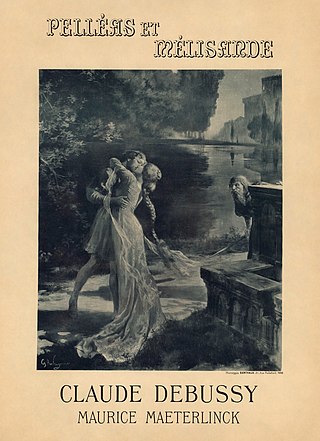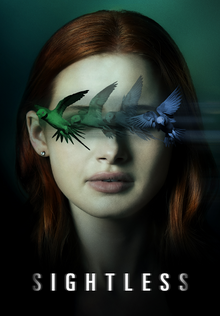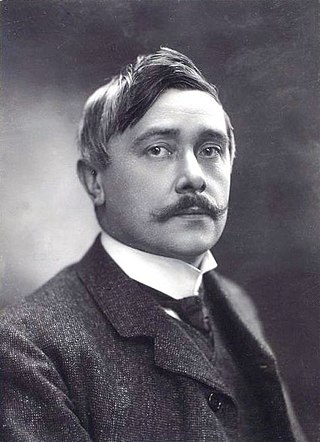
Braille is a tactile writing system used by people who are visually impaired. It can be read either on embossed paper or by using refreshable braille displays that connect to computers and smartphone devices. Braille can be written using a slate and stylus, a braille writer, an electronic braille notetaker or with the use of a computer connected to a braille embosser.

Sir Lawrence Alma-Tadema,, RWS was a Dutch painter who later settled in the United Kingdom, becoming the last officially recognised denizen in 1873. Born in Dronryp, the Netherlands, and trained at the Royal Academy of Antwerp, Belgium, he settled in London, England in 1870 and spent the rest of his life there.

Louis Braille was a French educator and the inventor of a reading and writing system named after him, braille, intended for use by visually impaired people. His system is used worldwide and remains virtually unchanged to this day.

Maurice Polydore Marie Bernard Maeterlinck, also known as CountMaeterlinck from 1932, was a Belgian playwright, poet, and essayist who was Flemish but wrote in French. He was awarded the Nobel Prize in Literature in 1911 "in appreciation of his many-sided literary activities, and especially of his dramatic works, which are distinguished by a wealth of imagination and by a poetic fancy, which reveals, sometimes in the guise of a fairy tale, a deep inspiration, while in a mysterious way they appeal to the readers' own feelings and stimulate their imaginations". The main themes in his work are death and the meaning of life. He was a leading member of La Jeune Belgique group and his plays form an important part of the Symbolist movement. In later life, Maeterlinck faced credible accusations of plagiarism.

Laurence Alma-Tadema, born Laurense Tadema, was a British writer of the late 19th and early 20th centuries who worked in many genres.

Pelléas et Mélisande is an opera in five acts with music by Claude Debussy. The French libretto was adapted from Maurice Maeterlinck's symbolist play of the same name. It premiered at the Salle Favart in Paris by the Opéra-Comique on 30 April 1902; Jean Périer was Pelléas and Mary Garden was Mélisande, conducted by André Messager, who was instrumental in getting the Opéra-Comique to stage the work. The only opera Debussy ever completed, it is considered a landmark in 20th-century music.

Jura Soyfer was an Austrian political journalist and cabaret writer.

Pelléas and Mélisande is a Symbolist play by the Belgian playwright and author Maurice Maeterlinck. It's about the forbidden, doomed love of the title characters and was first performed in 1893.

Lesbia was the literary pseudonym used by the Roman poet Gaius Valerius Catullus to refer to his lover. Lesbia is traditionally identified with Clodia, the wife of Quintus Caecilius Metellus Celer and sister of Publius Clodius Pulcher; her conduct and motives are maligned in Cicero's extant speech Pro Caelio, delivered in 56 BC.

Chu shogi is a strategy board game native to Japan. It is similar to modern shogi in its rules and gameplay. Its name means "mid-sized shogi", from a time when there were three sizes of shogi variants that were regularly being played. Chu shogi seems to have been developed in the early 14th century as a derivative of dai shogi. There are earlier references, but it is not clear that they refer to the game as we now know it.
Dai shogi or Kamakura dai shogi (鎌倉大将棋) is a chess variant native to Japan. It derived from Heian era shogi, and is similar to standard shogi in its rules and game play. Dai shogi is only one of several large board shogi variants. Its name means large shogi, from a time when there were three sizes of shogi games. Early versions of dai shogi can be traced back to the Kamakura period, from about AD 1230. It was the historical basis for the later, much more popular variant chu shogi, which shrinks the board and removes the weakest pieces.

Mircea Cărtărescu is a Romanian novelist, poet, short-story writer, literary critic, and essayist.

Pelléas et Mélisande, Op. 80 is a suite derived from incidental music by Gabriel Fauré for Maurice Maeterlinck's play of the same name. He was the first of four leading composers to write music inspired by Maeterlinck's drama. Debussy, Schoenberg and Sibelius followed in the first decade of the 20th century.

Georgette Leblanc was a French operatic soprano, actress, author, and the sister of novelist Maurice Leblanc. She became particularly associated with the works of Jules Massenet and was an admired interpreter of the title role in Bizet's Carmen.

Laura Theresa, Lady Alma-Tadema was a British painter specialising in domestic and genre scenes of women and children. Eighteen of her paintings were exhibited at the Royal Academy. Her husband, Sir Lawrence Alma-Tadema, was one of the most prominent Victorian painters.

Intruder is a one-act play by Belgian playwright Maurice Maeterlinck, which appeared first in publication in 1890. Journalistic appreciations of the text throughout that year prompted Parisian independent theatre producers to get the performance rights. From its stage debut the following spring, it became identified as a landmark work in the Symbolism movement of the late-nineteenth century.

Interior is an 1895 play in rhymed dialogue by Belgian playwright Maurice Maeterlinck. It was one of his few plays intended for marionettes.

Desire Caught by the Tail is a farcical play written by the painter Pablo Picasso.

Sightless is a 2020 American psychological thriller film written and directed by Cooper Karl, based on his 2017 short film of the same name. The film stars Madelaine Petsch and Alexander Koch.

The 1911 Nobel Prize in Literature was awarded to the Belgian author Maurice Maeterlinck (1862–1949) "in appreciation of his many-sided literary activities, and especially of his dramatic works, which are distinguished by a wealth of imagination and by a poetic fancy, which reveals, sometimes in the guise of a fairy tale, a deep inspiration, while in a mysterious way they appeal to the readers' own feelings and stimulate their imaginations." He is the first and remains only the Belgian recipient of the prize.



















